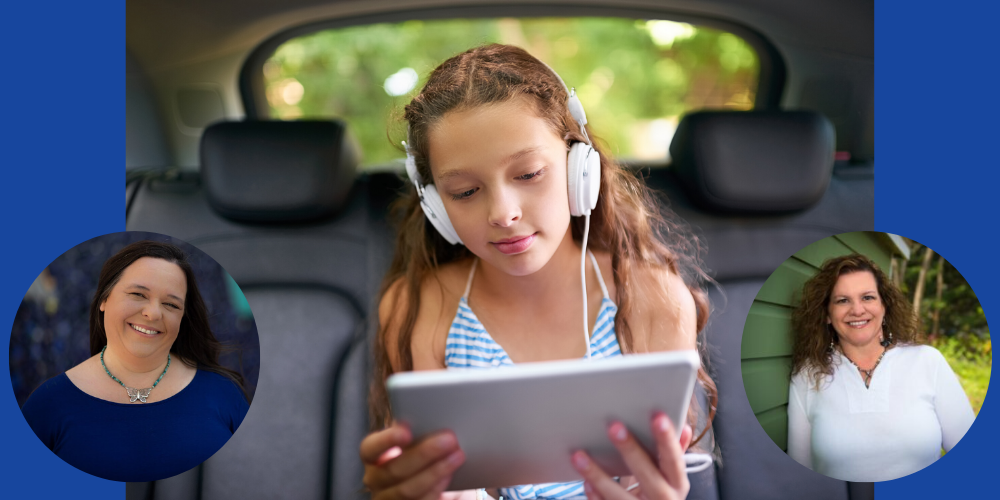Assistive technology, accessible ebooks, and reading support tools help students with reading challenges interact with text in a meaningful way
By guest authors Megan Shanley and Hillary Goldthwait-Fowles
There is more than one way to read. Printed text does not work for all readers. Many people have physical, learning, and visual challenges that impact their ability to access printed text. Providing content in multiple formats honors the unique needs of students with reading challenges and disabilities and allows them to have meaningful access to learning materials.
New and innovative technology tools can make reading easier for all learners. Audio content can be human narrated or use text-to-speech capability which provides computer-generated voices that read along while words are highlighted. Both formats provide benefits that assist students with decoding and boost comprehension, and they provide customization options such as changing the voices and narration speed and adjusting text size and contrast.
Some tools embed study aids such as highlighting, annotation, dictionary, and grammatical assistance which further support readers who struggle with comprehension and organization of ideas. No matter which barriers impede “traditional” reading, a variety of tools and supports allow individuals to interact with text in a meaningful way.
Sources of Ebooks:
- Bookshare (FREE for US schools and students that qualify)
- Epic! Books for Kids
- Tar Heel Reader
- Learning Ally
- OverDrive (for libraries)
Text-to-Speech Reading Tools:
- Microsoft Immersive Reader
- Speechify
- Snap&Read
- Read&Write for Google Chrome
- Bookshare Web Reader
- Dolphin Easy Reader
- Capti Voice
Advantages of Text-to-Speech
Text-to-speech, or computer-generated audio with synchronized word highlighting, has significant advantages that help a student engage with text on a personal level. Often, when listening to a human-read audiobook, the professional reader leads the listener with their interpretation of the text through the use of expression, sound effects, and emotion. In contrast, when the text-to-speech reader is following along with the text, all of the expression and interpretation can be generated by the learner, not the narrator. Those reading with the help of text-to-speech can build their own story in their imaginations. In addition, with many tools they can annotate and highlight the text and follow the highlighted text with a new level of engagement.
Setting the Stage for Success
Providing both educators and students with objective evidence to demonstrate the benefit of reading accommodations is so important. One way to do this is to use PAR and uPAR by Don Johnston. PAR and uPAR are assessments that compare student’s independent reading skills to their comprehension when using human audio and text readers. When students see how much more they can comprehend with a reading tool, they become more confident in their skills. An added bonus is that teachers and parents can see that reading accommodations show a more accurate picture of a student’s potential, intelligence, and success in accessing and understanding grade-level content.
Educators must always presume competence with students. Intentional use of assessment and trial of various reading tools are important parts of empowering readers who read differently. Using tools such as PAR and uPAR to show what reading accommodation(s) could best serve students, coupled with establishing a relationship with each student that allows for joint decision making regarding the best reading accommodations, set the stage for success for all readers.
Students Share Stories of Empowerment
We have seen students become confident readers who advocate for their use of text-to-speech or auditory support to “show I am smart” and say “my biggest strength is reading with technology.” One student who will soon graduate from high school, when reflecting on the use of reading accommodations, remarked, “I would not have made it through high school without Bookshare and my text-to-speech support. Without these resources I wouldn’t have been able to access higher-level classes and be successful.”
Another student, who is in third grade, remarked that when she uses technology tools, she can read better and has discovered a love of reading that she didn’t realize she could have. When we intentionally leverage these tools and resources with our students, we not only honor the individual student, but we are helping to build agency, advocacy, and identity.
Note: This article originally appeared in the March-April 2020 issue of the Accessibility, Compliance & Equity journal and has been reprinted with permission.
Megan Shanley is an Occupational Therapist and a RESNA-certified Assistive Technology Practitioner who works for Albuquerque Public Schools’ Universal Design Team as well as Southwest Neuropsychology and Behavioral Health in the field of Assistive Technology. As a professional who is dyslexic, Megan has a unique understanding of the power and challenges of integrating Assistive Technology into everyday life. She has devoted most of her career to Assistive Technology because she has repeatedly seen it empower so many students express their strengths and talents.
Hillary Goldthwait-Fowles, PhD., ATP, is an accessibility accomplice providing assessment, training, support, and consultation to individuals and organizations around AT, AEM, and UDL. She is an Assistive Technology Specialist for RSU 21 in Kennebunk, Maine where she is grateful to “be paid to think differently” and supports inclusive learning practices. She is also an adjunct faculty member for the University Of New England’s graduate certification programs in inclusion, as well as the University of Maine at Farmington’s graduate programs in Inclusion.


Be First to Comment